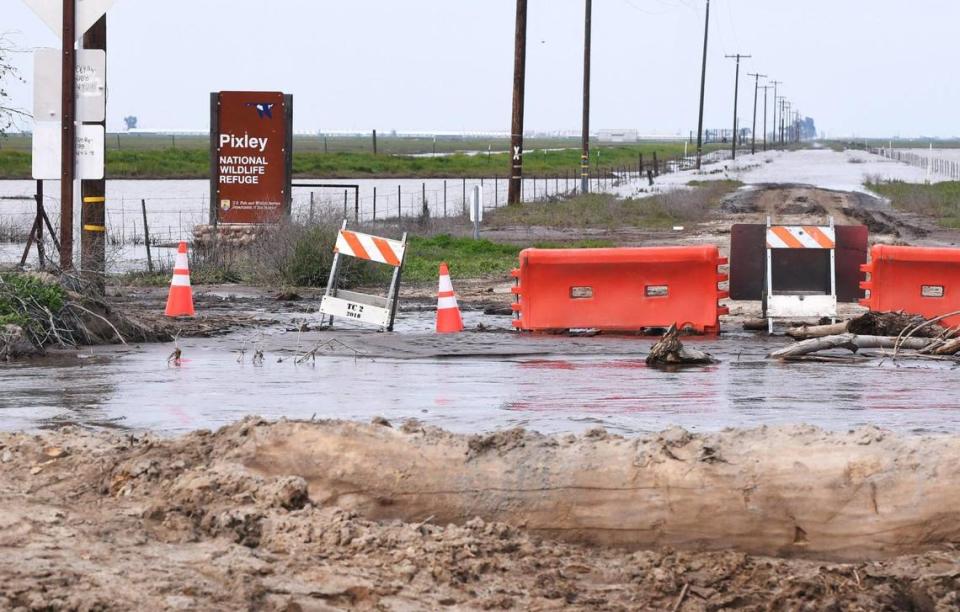In the face of spring flooding, Valley farmers can either act like heroes or villains | Opinion
The news harkened back to an earlier time in the San Joaquin Valley, when farmers would carry shotguns atop water canals to defend their supplies from competitors.
Only this time, the problem was too much water coming too fast and threatening to flood. In the pre-dawn hours early Saturday, someone driving a piece of big equipment cut an opening into the bank of Deer Creek at the Road 88 crossing in Tulare County. That sent water rushing out toward the historic town of Allensworth.

More significantly, the breaching diverted water from the Tulare Lake basin, where farming operations have planted acreage. As of Monday, no suspect had been identified and no arrest had been made. It’s unknown if someone associated with farming is the culprit here, but whoever did this had the skill to operate heavy machinery.
In another incident, one well-known company, J.G. Boswell, directed workers to park a big machine known as a “land plane” on a bank of the Homeland Canal to keep water out of Boswell land in the Tulare Lake region.
And in a third instance, the city of Corcoran had an armed patrol watching over its western levee to “keep it from being touched.”
Such are the measures being taken as the spring flooding season gets under way in the Valley.
Kings River flows
Winter’s heavier-than-normal snows and rains will now give way to springtime flooding in the low areas of the Valley, and farmers are going to be challenged like they have not been for some time.
By some estimates, the snow pack in the watersheds for the San Joaquin and Kings rivers is four times the norm. Pine Flat Reservoir east of Fresno, which captures the Kings, holds 1 million acre-feet. If the snow estimates prove accurate, that reservoir will fill and then spill many times in the coming months. Millerton Lake, which captures the San Joaquin, is half as big, meaning it may fill and spill twice as much.
Water let out of the dams will have to go somewhere. The natural course for both rivers is to the west, toward the low-lying areas of the Valley, where farming is done.
Unlike what was grown in decades past, farmers today have invested in high-value nut crops like pistachios and almonds. While it may have been possible to flood orchards during the winter dormancy period, now is not a good time to send water over trees. Their blossoms are giving way to nut formation, and no grower wants to have water standing over the base of trees that should be producing the new crop.
But it is also not acceptable for anyone to divert water toward towns. Not only is that irresponsible from a property standpoint, but it could lead to the danger of inadvertent drowning of livestock or people. That would be criminal.
Risky business
Farming, by definition, is a business built on risk. The list seems endless: Drought, frost, heat, insect infestation, bacteria and fungus outbreaks, economic challenges, supply chain breakdowns, shipping headaches, and worker shortages. Add to the list the likelihood of flooding.
But this is what farmers sign up for, so it is up to growers to do the right thing this spring. Whoever is cutting holes into creek banks, levees or canals is simply wrong and, if caught, criminal. Anyone caught doing such a thing must bear the full weight of the law.

If a grower loses a crop due to flooding, one recourse is to seek federal and state assistance. There is no shame in such help — growers in other states routinely rely on such assistance when they encounter damage from flooding or other natural disasters.
The bottom line is that low-income residents in the Valley’s small, rural towns already face huge hurdles in their daily existence. Redirecting floodwaters into those towns simply adds to their woes. There is a word for such an act: despicable.

